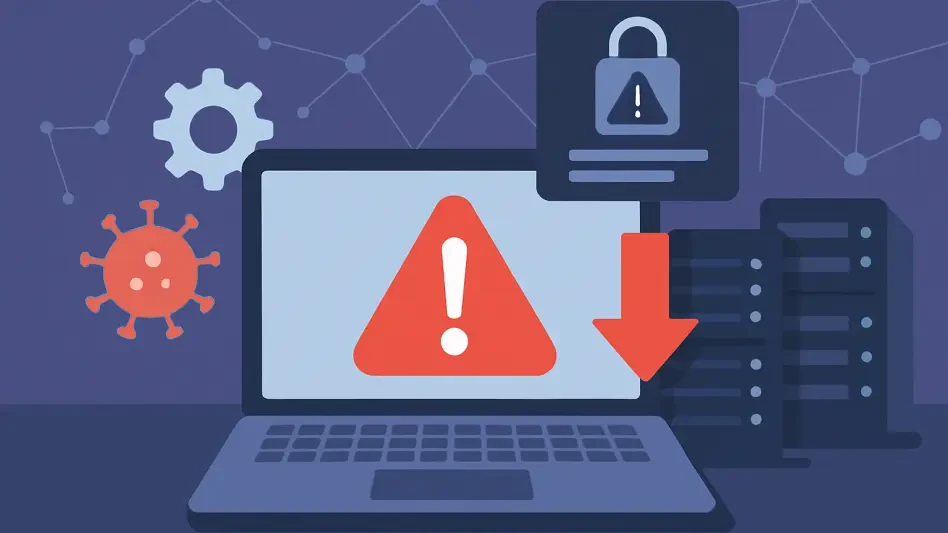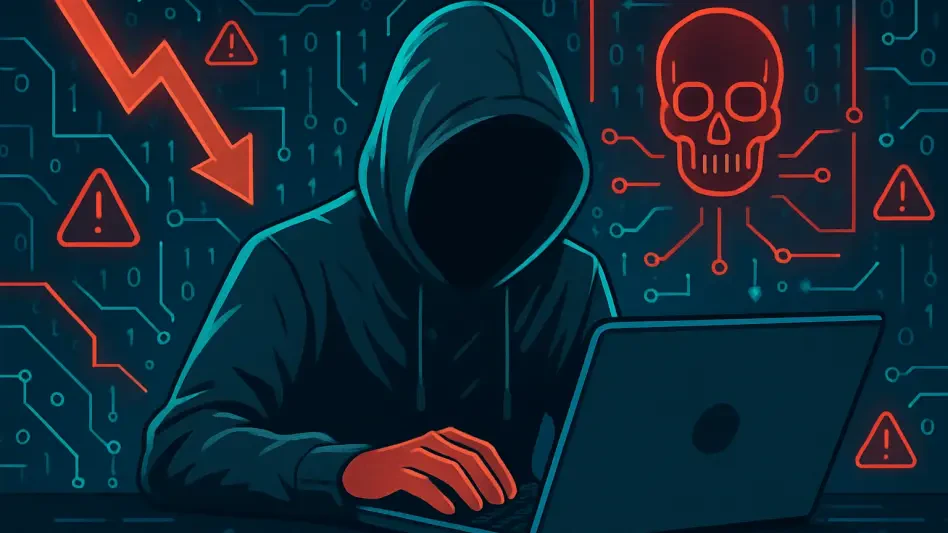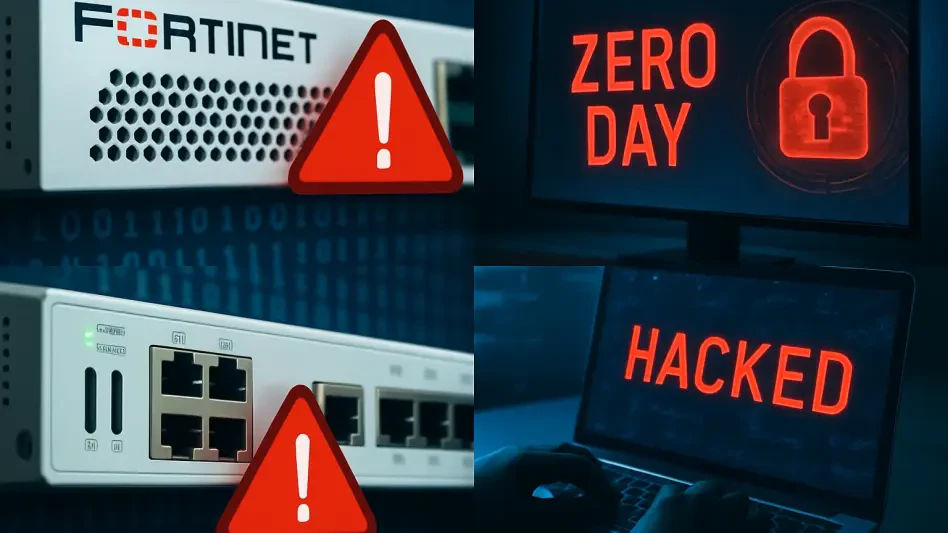The rapidly evolving landscape of cybersecurity threats has been thoroughly scrutinized in the latest Google Threat Intelligence Group (GTIG) report, revealing intricate links between zero-day vulnerabilities and rising spyware activities. This report offers a comprehensive view of how 75 zero-day exploits were detected in 2024, intricately tied to spyware and predominantly driven by espionage activities. These findings depict a crucial intersection where advanced threats underpinned by spyware factor into the broader security equation, emphasizing the challenges cybersecurity professionals face in tackling spyware-related vulnerabilities.
Escalation of Zero-Day Exploits
Increasing Exploitation and Espionage Tactics
Zero-day vulnerabilities represent a critical aspect of the cybersecurity conversation, posing unique challenges due to their unknown nature to software vendors, enabling exploitation before solutions are developed for mitigation. Recent findings bring attention to the role of state actors, particularly those from China and North Korea, in leveraging these vulnerabilities through sophisticated spyware techniques that escalate the cybersecurity arms race. This dynamic comes amid improved security frameworks attempting to thwart ever-advancing cyberattack methods. The GTIG report identifies a notable increase in zero-day exploit sophistication, evidenced by more than half of these vulnerabilities being linked to spying endeavors. This indicates an ongoing power struggle between innovative cyber threats and the organizations tasked with shielding sensitive information systems from overwhelming attacks.
Commercial Spyware’s Role
The role of commercial spyware ventures such as Paragon Solutions and NSO Group has emerged as a notable trend in zero-day vulnerability exploitation. These firms offer comprehensive spyware solutions that enable a spectrum of clandestine operations, showcasing espionage-driven initiatives extending beyond nation-states to commercially oriented entities. Spyware-related exploits broaden the threat landscape by introducing actors driven by commercial goals rather than strictly governmental affiliations, complicating the cybersecurity environment further. Commercial spyware products essentially enhance cyberattack capabilities, contributing to a growing market where surveillance objectives utilize sophisticated tools. This evolution accentuates the importance of cybersecurity vigilance, as the boundaries between state-sponsored and commercially motivated cyber threats become increasingly blurred.
Shifts in Targeting Patterns
Targeting Enterprise Technologies
In the realm of cybersecurity, enterprises are an emerging focal point due to the potential scale and impact of infiltrations within their infrastructure. The GTIG report underscores this shift, marking a significant increase in zero-day exploits targeting enterprise technologies from 37% to 44% in 2024. This trend reflects a strategic targeting pattern where attackers aim at enterprise environments, recognizing their vulnerabilities as gateways to extensive organizational disruption. Dissecting enterprise-specific systems requires meticulous planning and effort, underscoring the precise and methodical approach adopted by threat actors today. The evolving targeting pattern indicates enterprises must prioritize a robust defense posture, delving deeper into their unique vulnerabilities and crafting tailored responses to mitigate potential breaches. The increasing frequency and sophistication of these attacks underline the perpetual need for enterprise sectors to continuously refine and reinforce their cybersecurity strategies.
Focus on Operating Systems
Recent data indicates a definitive strategic shift in exploit techniques, with an elevated focus on operating systems as prime targets for malicious activities. GTIG’s analysis reveals that Microsoft’s Windows operating system witnessed a substantial rise in targeted exploits, escalating from 13 documented events in 2023 to 22 entries in 2024. This shift from mobile platforms and browser-based vulnerabilities to broader systemic weaknesses poses intricate challenges for involved operators tasked with counteracting these threats. Such developments insist that organizations bolstering their cyber defense frameworks apply comprehensive measures tailored to any operating system’s specific security requirements. The increasing targeting of operating systems demands a re-evaluation of defense strategies that adapt promptly to evolving tactics from cyber adversaries and deliver proactive protection through enhanced system security protocols.
Diverse Motivations and Implications
State-Sponsored and Financial Motivations
State actors from regions such as China and North Korea continue to be the prominent drivers of espionage-driven exploits, contributing significantly to the cybersecurity threat landscape. However, a notable factor is the participation of non-state actors pursuing financially motivated espionage, which cultivates various motivations behind zero-day exploitation. These diverse ambitions present an expanded threat environment that defies traditional security expectations and introduces complex dynamics into the cyber arena. Financially driven espionage initiatives showcase an alternative dimension to the typical state-sponsored exploits, highlighting economic motivations as parallel drives pushing organizations toward proactive threat assessments. This convoluted mix of motivations calls for an enhanced understanding of attacker profiles and, consequently, adjustments to counter methodologies, bridging the gap between state-centric and economically fueled cyber threats.
Impact on Larger and Smaller Entities
The uneven capacity of companies concerning cybersecurity readiness reveals a stark discrepancy between industry giants and smaller firms. Larger enterprises, like Google and Microsoft, benefit from abundant resources that significantly enhance their ability to mitigate zero-day vulnerabilities swiftly and effectively. In contrast, smaller companies face disproportionate challenges, with limited means to combat these escalating threats, often leading them to experience catastrophic repercussions when vulnerabilities are exploited. Firms like Ivanti exemplify potential vulnerabilities inherent within smaller sectors, emphasizing the necessity for substantial advancements in development practices to safeguard cyberspace adequately. This disparity necessitates industry-wide discussions addressing scalable solutions that cater to smaller firms’ unique requirements, ensuring equitable resilience against cyberattacks across diverse business environments.
Proactive Cyber Defense Strategies
Necessity for Comprehensive Security
The latest GTIG report defines a clear directive for organizations aiming to maintain a proactive stance in cybersecurity defense strategies, particularly in anticipation of sophisticated threats emerging from zero-day vulnerabilities. Industry experts suggest that documented exploits embody only a portion of the latent risks, reinforcing the urgency for an integrated security approach enveloping robust measures like Network Detection and Response (NDR). Harnessing advanced threat response architectures requires an amalgamation of preventative and reactive strategies, forming a comprehensive framework to shield organizations effectively. This necessitates adopting holistic cyber practices that accommodate agile adjustments reflecting evolving threats and include cross-sectional assessments to identify, analyze, and fortify defenses against zero-day exploits broadly.
Leveraging Threat Intelligence
The Google Threat Intelligence Group (GTIG) has released a vital report that sheds light on the complex dynamics of cybersecurity threats, particularly the connection between zero-day vulnerabilities and the escalation of spyware activities. The 2024 report uncovers how 75 new zero-day exploits have been linked to spyware, often fueled by espionage operations. These exploits illustrate a significant crossroads where sophisticated threats, heavily reliant on spyware, intersect with broader security challenges. This intersection underscores a persistent and growing difficulty for cybersecurity professionals tasked with addressing vulnerabilities tied to spyware. As the digital landscape continues to evolve, the findings stress the importance of staying vigilant and adaptive to counteract these modern threats. It underlines the necessity for enhanced strategies and tools to mitigate the risks posed by such invasive software, ensuring the integrity and confidentiality of sensitive information amidst this ever-changing threat environment.








